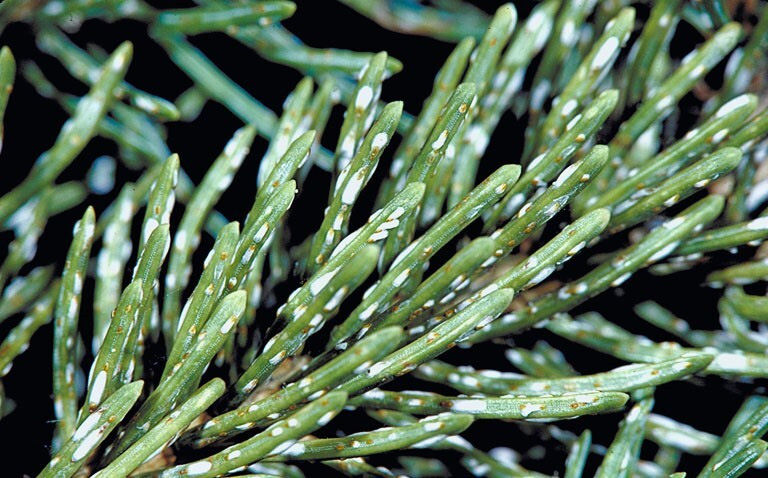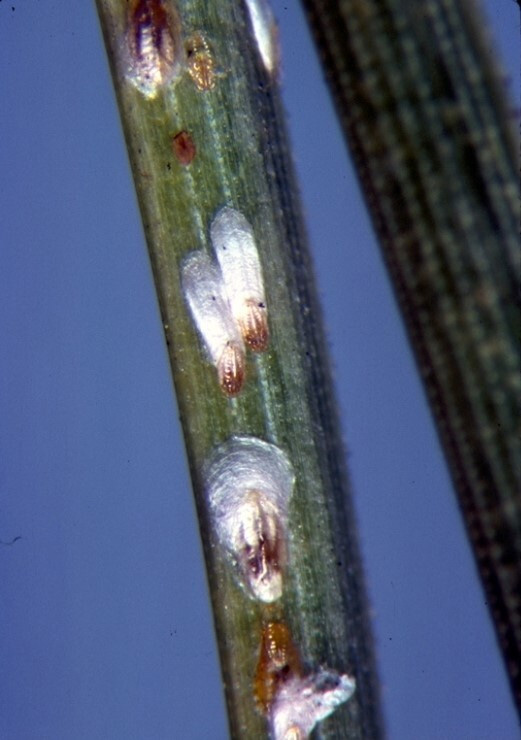Pine Needle Scale (Chionaspis pinifoliae)

Figure 1. Pine needle scale infestation on the needles of a spruce.
Hosts
Pine, spruce, and Douglas-fir trees
Damage and Symptoms
White scale coverings appear on the needles. Heavy infestations can cause yellowing, lack of vigor, and needle drop.

Figure 2. Pine needle scale adults on a spruce needle. Photo by US National Collection of Scale Insects Photographs, USDA-ARS, Bugwood.org.
Life Cycle
The pine needle scale overwinters on the needles in several different stages under the armored shell of the female. Egg hatch occurs from late April to June, depending on the temperature.
The crawler stage happens to coincide with lilac bloom. The scale nymphs settle on the needles and remain immobile for the remaining season. The white shell of the female is formed in late July.
Management
Heavy infestations are often indicative of a stressed tree. Low populations of pine needle scale will not harm the tree, and predators are very important for control of the scale. If chemical control becomes necessary, a dormant oil can be applied before bud break (note: some oils can cause discoloration of spruce needles). A systemic insecticide (active ingredient dinotefuran) can be applied in early spring.
Check for the active crawler stage by putting a white piece of paper underneath some pine needle branches and shaking the vegetation. If the crawlers are active (about the size of a pin head), they will fall and move on the piece of paper. Follow up with a contact spray for the crawler stage, if necessary.
Further Information
To learn more about the topics discussed on this page, contact the Schutter Diagnostic Lab. If you suspect an infestation on your property, contact your local extension agent, the Schutter Diagnostic Lab at Montana State University, or the Montana Department of Agriculture.
This fact sheet is also available as a printable PDF (449KB).
Disclaimer: These recommendations are provided only as a guide. It is always the pesticide applicator’s responsibility, by law, to read and follow all current label directions for the specific pesticide being used. The authors and Montana State University assume no liability resulting from the use of these recommendations. The Montana State University Extension Service is an ADA/ EO/AA/Veteran’s Preference Employer and Provider of Educational Outreach.
